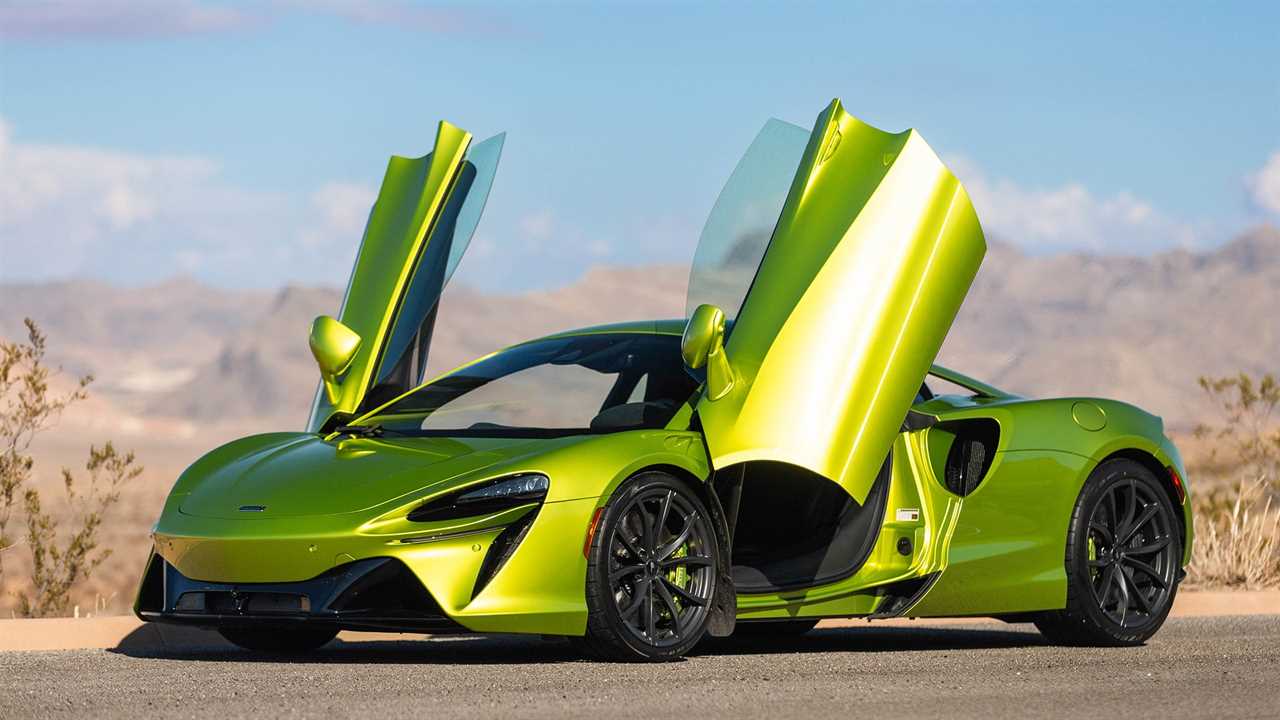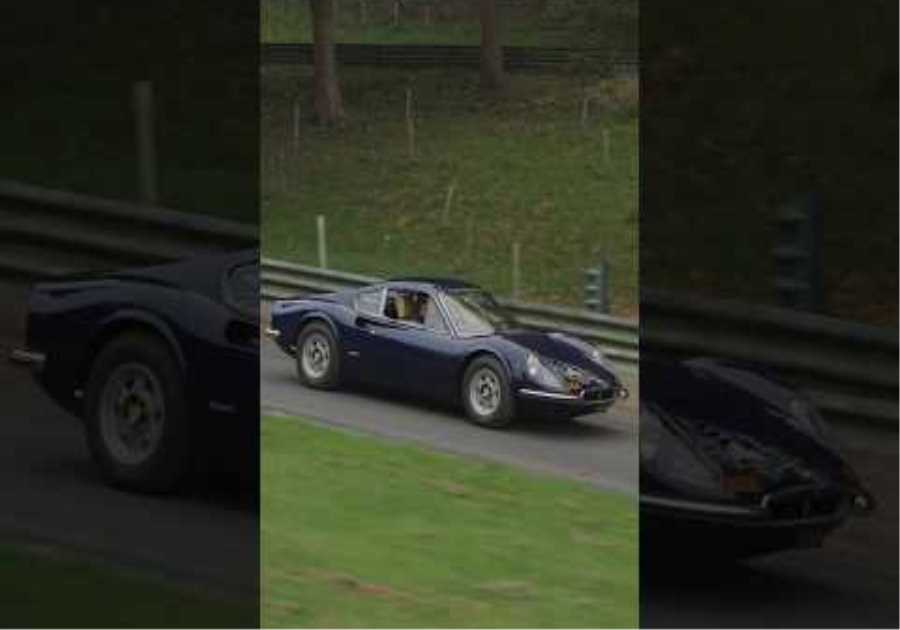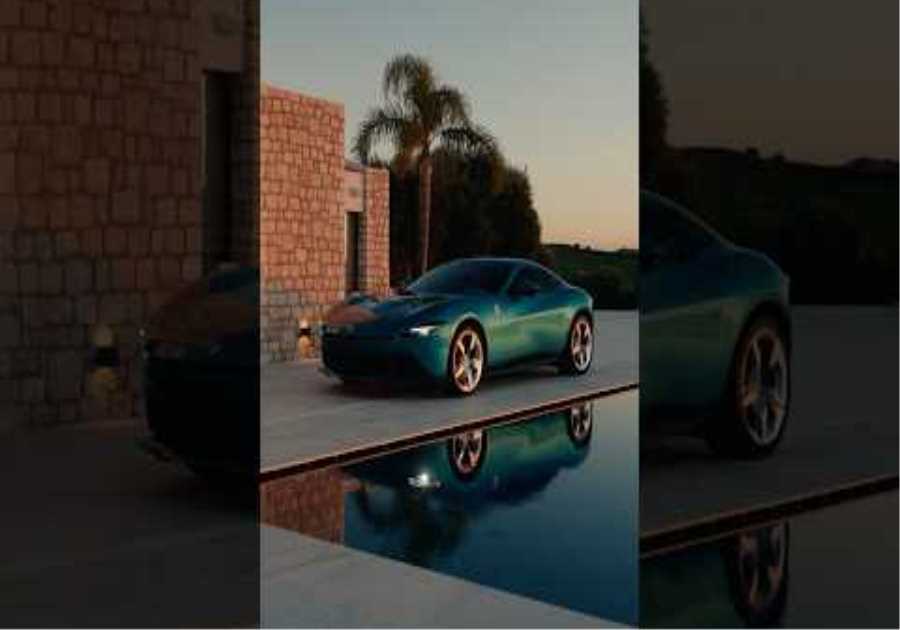
It is the year 2023 and McLaren is back to making plug-in hybrid supercars. But whereas 2013’s then-revolutionary McLaren P1 set the world on fire, the 2023 McLaren Artura finds itself in a new reality where silent electric motion is closer to the norm than being the outlier.
This doesn’t mean the Artura is any less special. For one, it has an actual name, and for another, it’s a marvel in packaging and weight-savings. It also represents the trickle-down effect that eventually comes for all automotive tech. Before, basically no people could afford McLaren’s first plug-in. Now, only most people won’t be able to afford McLaren’s second plug-in.
Kristen LeeKristen Lee
Personally, I forgive you if that last line makes you want to write the Artura off completely. It’s totally justified not to give a damn about a material object the majority of us will never get to own. But much as how I’ll never get to live on Pandora, I still went and saw Avatar: The Way of Water twice and on the biggest IMAX screens I could find. It felt nice to turn my brain off for a few hours and give myself over to the (frankly incredible) visuals.
I’ll never own a McLaren, and that’s okay. Even in this highly commodified hobby we’ve all decided to partake in, you can enjoy things without owning them. I appreciate that cars like the Artura exist. It means there are still people out there who want to build cool stuff. It means there are still people out there who want to drive cool stuff. That’s enough for me. I am merely glad to report the Artura delivers an experience worthy of such emotions.
2023 McLaren Artura Review Specs
- Base price (as tested): $237,500 ($258,585)
- Powertrain: 3.0-liter twin-turbo V6 plug-in hybrid | 8-speed dual clutch | rear wheel drive
- Horsepower: 671 @ 7,500rpm
- Torque: 531 lb-ft @ 2,250 to 7,000 rpm
- seating capacity: 2
- Curb weight: 3,303 pounds
- cargo volume: 5.3 cubic feet
- 0-60mph: 3 seconds
- top speed: 205mph
- Electric top speed: 81mph
- All electric range: 11 miles
- Total range: 340 miles
- Efficiency: 18 mpg combined on gasoline only | 39mpge electric and gas
- Quick take: Regardless of how you feel about V6s or hybrids, the Artura maintains that very magical McLarenish quality of feeling like a low-flying plane while at speed.
- Score: 9.5/10
In the past, roadgoing McLarens have (rightfully) been accused of all looking exactly the same. At the time of this writing, we catch McLaren with a relatively light lineup: The 570 and 650 models have all been retired. Excluding the exclusive models and the bespoke one-offs, we’re left with the McLaren 720S family (have holes in their faces; ended production in December actually!), the McLaren GT (has no holes in its face, nor the boomerang- shaped headlight/intake combination), and now the McLaren Artura (has skinnier holes in its face, and also the boomerang-shaped headlight/intake combination). Lake? Easy.
Kristen Lee
And in the flesh, the Artura is marvelous. Long, low, and lean, it carries the wonderful midship McLaren shape we first saw on the MP4-12C; a silhouette chiseled by wind. Massive air channels in its doors feed into giant side air intakes, while elegant flying buttresses swoop from the roof to join the rear haunches. Does it bring a slight Gothic flair to the car, or is it just me?
Inside, it’s outer spacey like the rest of the modern McLarens. Thin seats, wide sills, little steering wheel, petite pedal box. The binnacle moves with the wheel so it hopefully never blocks your view of the gauges, and the cast aluminum shift paddles sing with a reverberating ping when you flick a fingernail against them. The Artura is currently the most modern of the McLaren roadgoing bunch, with aids and features such as adaptive cruise control, lane-departure warning, road sign recognition, and auto-dimming headlights making their debut with the brand. Still, this cabin looks and feels like no other production car currently on the market and it’s a special mood that never quite goes away.
Climbing in involves performing a deft twist at the hips and an adroit duck of the head. Swing over the sill—the most visible aspect of the new, 181-pound MCLA carbon fiber monocoque chassis—and drop into the surprisingly comfortable seat. Visibility, just like in the 720S, is very good and provides a light airiness to things.
Driving a modern McLaren is to engage in acts of deliberation. No interaction comes easily: the brake pedal is heavy, the throttle pedal is weighty, you have to really put your arm into opening and closing the dihedral doors. By demanding that effort, everything makes its presence known, and there’s no clearer example of this than its steering. Sticking still to the blessed electro-hydraulic unit, the Artura’s elfin wheel in the hand responds to the lightest hair of input, and chatters fluently back up through your fingers.
Truly, nothing feels like a McLaren in motion. I don’t know what sort of spellwork they’re weaving in Woking, but the cars all have this fighter-jet quality to the way they occupy the roads. The Artura is no different. With your feet encased in the minute pedal box, the thin A-pillars running up on either side of you, it’s not hard to pretend you’re the pilot. Slight imperfections in the road feel like the typical staccatos from turbulence; all the while, the engine buzzes along behind you, its raspiness opening into an all-out roar as soon as you smash the throttle pedal. It’s a sensation as close as we’ll come to flying without physically leaving this earth.
Though it lacks the instantaneous acceleration of an all-electric motor, the Artura still possesses more than enough fury to knock your breath away. Fast is such an incredibly simple goal to achieve, but do not mistake simple for easy. Something like the Pininfarina Battista goes almost easily because it feels like it isn’t even trying. Here in the Artura, uncomplicated speed is accomplished through a complicated dance of eight gears, six cylinders, two turbochargers, two clutches, a battery, a motor, and a rear axle. The coherence with which all those factors seamlessly work together—that it all comes together collectively with what feels like little effort—is nothing short of incredible.
On track, it’s nearly unflappable in the corners, tearing through tricky late apexes with god-like proficiency. Yeah, there’s a “drift mode,” but you have to really wrest the car’s grip from itself to get it to slide at all, because it holds on tighter than a lioness to a fresh kill.
The Artura’s big party trick is that it can rely on its hybrid setup for smoother power delivery and quieter around-town prowling. This, I thought, was just the coolest thing, and I slid happily into the habit of flicking the car in and out of its all-electric mode upon entering and exiting town centers. Doing so is easy: You reach forward with your right hand and physically toggle the powertrain menu down to the electric setting. It’s the same with the suspension and handling controls on the left-hand side of the binnacle. Flick and feel for the difference in the ride. (The differences between those settings are very, very noticeable because the Artura indeed rides quite hard in the most aggressive setting.) Get familiar, and you can memorize how many clicks it is to get to the setting you want without even having to look. Simple.
Where the car does fall short, as all modern cars do, is with its touchscreen controls. This is not to say they were bad during the three or so hours I spent behind the wheel. Mostly, I was annoyed that it was yet another car that relegated climate and audio controls to the touchscreen. But, given how easy-to-use and physical the Artura’s driving dynamics settings are, it’s clear to me what McLaren’s priorities actually are.
Electrical gremlins that reared their heads during the drive included the all-electric mode not turning on at one point, despite the system displaying more than adequate battery power remaining, and a parking brake not automatically engaging even though the vehicle had been put in several parks moments before I was unable to replicate both of these issues and it was unclear if they were just something that happened to affect the test car I spent the day in. I suppose this would be the appropriate part of the review where I, separately, bring up the fact that the Artura has already been recalled for a potential fuel leak.
I make no secret that my favorite car I’ve ever driven is the Lotus Evora GT. The Artura feels like that, just a bit bigger, way more powerful, and without a third pedal. There’s a special way it wraps itself around you. It’s not just a vehicle, it’s a new way with which to experience the world. In spite of it being packed full of advanced tech, the newest McLaren plug-in hybrid feels shockingly normal. It doesn’t drive like it carries any extra weight or complexity, nor does it really give you any hint at all that there are more systems at work here than before. Well, if you don’t use the all-electric mode, that is.
That, apparently, was all by design. McLaren wanted the Artura’s driving experience to be as natural as possible. It’s why, for example, the car doesn’t use regenerative braking. Instead, a spokesperson explained, regen comes from the engine, so feedback from the brake pedal remains unchanged.
That got me thinking. McLaren’s only really been building small-batch road cars since 2011. You could argue 12 years might not be enough time to really nail the endeavor, but I’d spin that around and say it gives McLaren more freedom than the other supercar brands. When you think of a Ferrari or Lamborghini, you also think about big V8, V10, or V12 engines that are the personality of the car. There’s legacy baked in there, and one of the peskiest things to shake off is the public’s sense of entitlement to that legacy, even if it is detrimental to progress.
McLaren suffers from no such thing. It’s not really kept to tradition in the ways others are. The McLaren F1 famously had a V12 engine, the P1 had a plug-in hybrid, twin-turbo V8, and now the Artura has a plug-in hybrid, twin-turbo V6. Ferrari’s MO has typically been to build a car around an engine. McLaren’s is only to build a car that goes fast. It doesn’t really matter as much how.
I went into this launch asking myself whether the new and very technologically advanced Artura would still feel like a McLaren. Would it still have the alien interior? The fantastic power at my beck and call? The otherworldly sensation of flying while at speed? The simple answer is yes.
For the majority of the populace, the Artura exists merely as an unobtainable spectacle. That’s fine. But if you let it, it’s also more than that. If you let it, it can be a welcomed reassurance that we aren’t such jaded and battle-worn adults we’ve become immune to the old-magic rush of wordless wonder that comes with looking at and appreciating a supercar. The Artura does this for me. I hope it does this for you, too.
Kristen Lee
Got a tip? Hello at me: [email protected]
Did you miss our previous article...
https://formulaone.news/mclaren/10-european-muscle-cars-that-can-easily-compete-with-their-us-rivals






